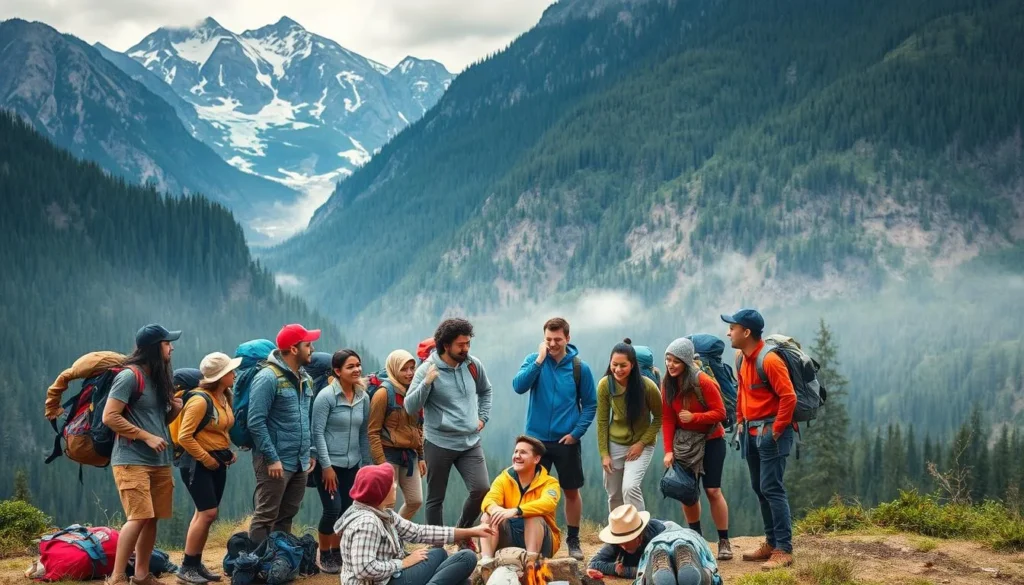Introduction
Nearly all disaster-hit locations actively depend on tourism flows to restart their economic recovery. Travel emerges as a powerful force that helps shattered communities after operating through natural disasters which include hurricanes. Visitors to these spots offer hope and resources together with essential financial backing.
According to Olivia Cryer and other experts the vital needs of disaster-affected locations frequently get lost in the first aftermath rush. Well-regulated travel activities enable regions to restore from damages. Safe travel to recovery areas has become an official policy which helps visitors perform meaningful contributions to these areas’ revitalization process.
Through this approach multiple tourist locations stretching from the Caribbean to Southeast Asia have managed to profit. As travelers view communities recover from disasters they help these communities participate in their process of healing. Visits to these specific locations enable travelers to contribute directly to their recovery.
Key Takeaways
- Tourism provides substantial help to destinations which have experienced disasters.
- Watching over our tourism practices ensures the development of local business sectors in combination with thriving neighborhoods.
- The measured response to travel requires expert evaluation according to multiple insights.
- Safe travel is a strategy which national authorities promote to support community restoration.
- Economic recovery happens alongside emotional healing because of visitor activities.
Introduction to Post-Disaster Tourism
Dealings with disaster recovery depend on human resources more than mere financial support. Natural disasters cause total destruction which affects physical infrastructure together with emotional effects and economic loss. Tourism acts as a vital instrument for recovery processes to occur.
The Destination Stewardship Report – Autumn 2023 shows that post-disaster tourism goes past generating only financial advantages. This approach targets three objectives which include recovery of confidence along with community backing and development of sustainable growth. Visitors to the affected areas actively support both present recovery initiatives and future development measures.
| Role | Contribution |
|---|---|
| Residents | Lead local recovery efforts and preserve cultural heritage. |
| Travelers | Provide financial support and promote awareness. |
Scope and Objectives
The main goal of destination recovery through tourism involves assisting places affected by disaster in their reconstruction. The economic recovery of destinations alongside infrastructure reconstruction requires both community backing and revitalizing the economy. Here are the key objectives:
- Tourism operates as an economic recovery mechanism by providing essential money flow into regional financial systems which enables business recovery alongside economic development.
- During post-disaster visits residents receive both moral and monetary backing from tourists which helps establish community unity.
- Traveling responsibly provides destination tourism with two essential results: it strengthens confidence in the location’s security as well as its attractiveness to visitors.
- Tourists make sound decisions when provided with dependable information that gives them precise guidance.
The correct utilization of tourism activities leads to favorable transformations in areas that experienced disasters.
Natural disasters
Natural disasters tend to transform how the destination looks to potential visitors. These catastrophes provide a possibility to redevelop affected locations. Sustainable approaches when prioritized will result in communities that display increased strength and better resilience.
The process of sustainable recovery depends greatly on both people who live in the destination and those who visit as tourists. Tourism can serve the destination through joint resident and visitor efforts.
Tourists together with local residents play fundamental parts in grasping how natural disasters harm destination areas.
Rebuilding operations face special difficulties after nature strikes tourists destinations. Natural occurrences which include hurricanes alongside earthquakes result in both physical and mental anguish to affected populations. The proper assessment of their effects remains vital to accomplish complete recovery efforts.
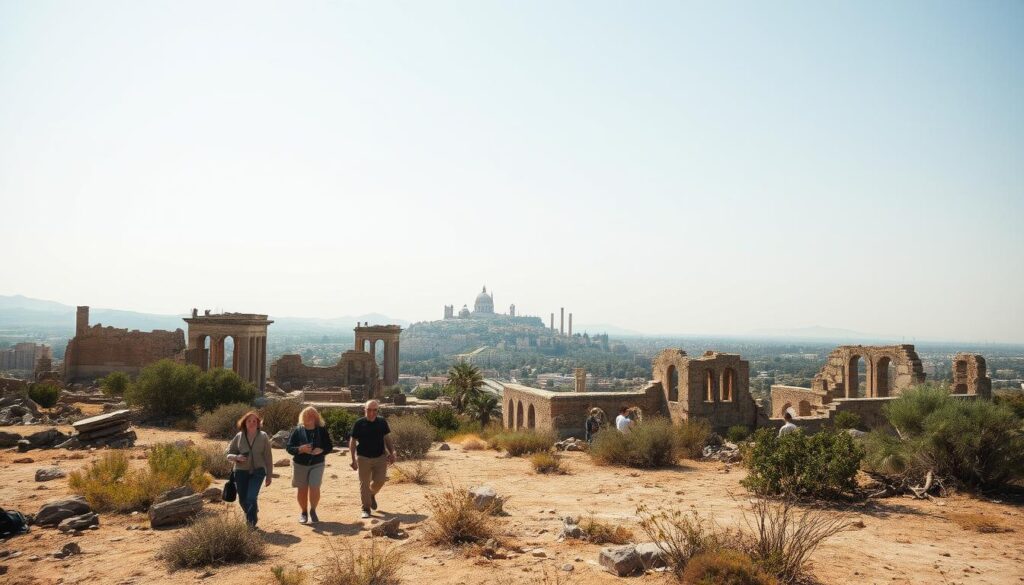
Defining Natural Disasters and Their Effects
Conflicts due to natural processes lead to catastrophic events which scientists call natural disasters. Hurricanes together with earthquakes and wildfires as well as tsunamis represent the most common natural disasters. The various disaster types present specific obstacles which include breaking infrastructure as well as enduring financial problems.
Hurricanes shove homes to destruction along with disrupted power distribution systems and earthquakes demolish entire cities by destroying them. Natural disasters create massive ecosystem destruction while tidal waves trigger massive flooding at affected areas. Both framework and human activities suffer severe destruction from these events which further disrupt the existing community structure.
Case Examples from Around the World
Terrifying evidence comes from the devastating 2004 Indian Ocean tsunami which disrupted 14 nations. Two hundred thirty thousand people died while 14 nations endured this disaster. Massive rebuilding operations and economic issues emerged after the disaster.
The 2010 Haiti earthquake stands as one of the prominent disaster cases worldwide. More than 200,000 people died during this disaster and the disruption displaced 1.5 million individuals from their homes. Years of necessary restoration efforts were needed because of how severely infrastructure and the economy suffered from the disaster.
The consequences outlined in these events demonstrate the prolonged difficulties which affect locations under distress. Area safety perception among local residents alongside economic stabilization need proper restoration for proper recovery to happen.
- Natural disasters probe the Hon stability of citizens while granting them potential implementation of transformation and improvement.
- To create effective recovery plans one must first understand completely the effects of situations like these. The study of past cases enables better support for rebuilding efforts in affected destinations.
- Tourism after disasters functions as an essential tool for community recovery as people make travels to these areas.
Countries that experience devastation can gain fundamental support from those who travel to these regions. Disasters that occur in nature damage more than property because they harm people emotionally while causing financial loss. Visiting these areas enables travelers to provide support through their financial resources in addition to bringing hope as well as necessary assistance.
| Initiative | Impact |
|---|---|
| Puerto Rico Volunteer Programs | Rebuilt homes and schools, strengthened community ties. |
| Japan’s Tourism Campaign | Boosted local economies, restored confidence. |
| New Orleans Cultural Revival | Supported local businesses, highlighted resilience. |
How Tourism Aids Community Rebuilding
Tourism functions continuously towards rebuilding both the physical structures and mental framework of communities following disasters. Visitors offer two kinds of support which creates solidarity between residents and families affected by disasters. The increased consumer expenditure within local communities helps stabilize economic situations within communities.
The reconstruction of a community depends significantly on the voluntary work and collaborative relationships between local citizens. Travelers united with Puerto Rican residents to rebuild houses and educational institutions following Hurricane Maria. The joint effort between travelers and residents accelerated recovery steps while developing stronger ties between local people.
Travelers bring two essential elements beyond financial assistance which consist of hope and fresh purpose.
Best Practices from Recent Events
The current events demonstrate that tourism serves to decrease recovery periods and restore community spirit. After the 2011 Tōhoku earthquake followed by tsunami Japan supported tourism in distributed areas. The initiative not only strengthened economic activity in local communities but additionally rebuilt faith about area security.
Tourism played a role in New Orleans’ recovery during the recovery process of Hurricane Katrina. The city received a surge in tourists who provided support to local businesses and cultural events. Touristic visits demonstrated the city’s strong character through which it earned its position as one of the leading travel destinations.
The mentioned examples demonstrate how travel supports recovery operations. The travel experience achieves meaningful change for these areas when people decide to explore disaster-struck locales.
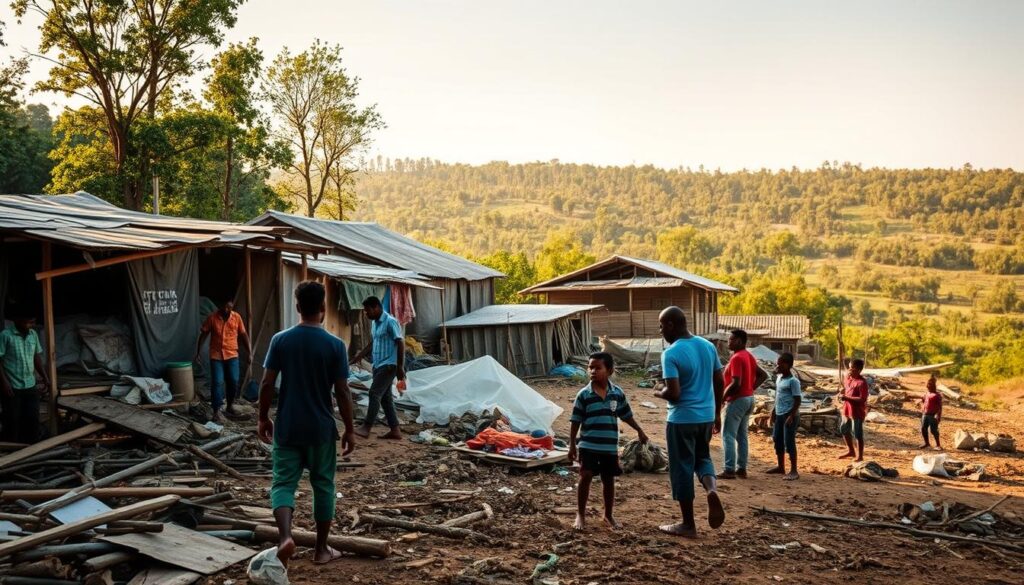
Constructing an Accountable Travel Schedule for Recovery Purposes
Travel planning with purpose will create substantial impact when visiting areas affected by disasters. The alignment of your travel plan with recovery objectives in the area will generate beneficial outcomes for both the local population and regional development. The process supports both visitors and the location they visit.
Consulting Local Experts and Authorities
Contact with local experts together with authorities must happen before entering affected regions. The local experts and authorities maintain current information about safety measures and infrastructure status together with community requirements. The reliable sources for accurate information consist of government websites together with travel agents and non-profit organizations.
The residents of Aceh used local guides to move throughout the region after the 2004 tsunami hit the area. The cooperative relationship between tourists and local authorities produced beneficial support for recovery work without neglecting community requirements.
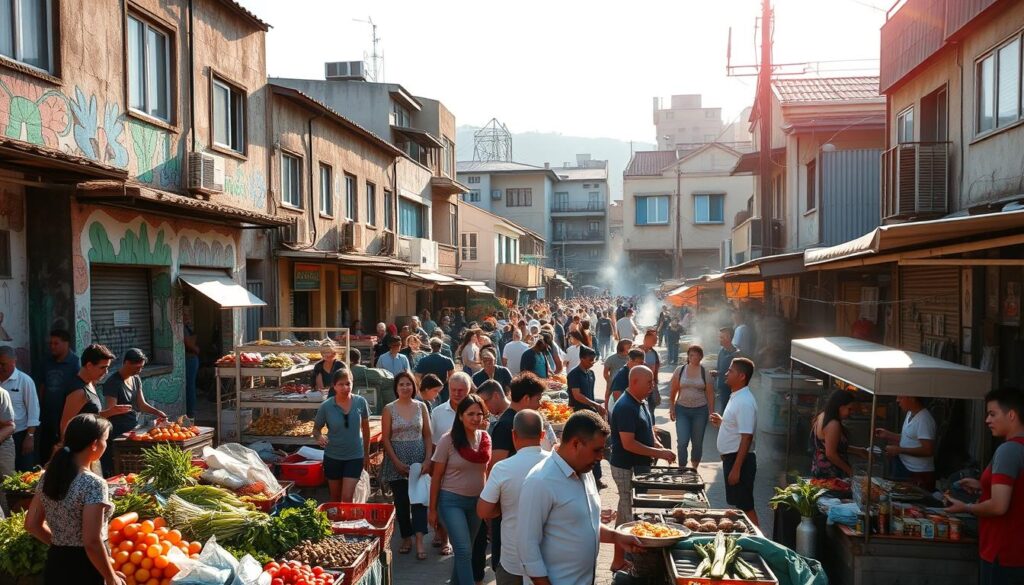
Adapting Itineraries to Local Needs
The success of visiting a place struck by disaster depends heavily on one’s ability to adapt their travel schedule. Make itinerary adjustments according to the existing infrastructure conditions alongside local community strategic needs. The activities would include business stops and cultural events combined with volunteer programs.
After Hurricane Maria struck Puerto Rico visitors modified their tourism plans to focus their efforts on reconstruction work within the area. Local economic growth together with township unity benefited from this planning method.
Travelers who follow these procedures can develop meaningful plans that produce significant effects. Travelers who adopt this way of visitation experience both faster recovery and enhanced responsible behavior in tourism.
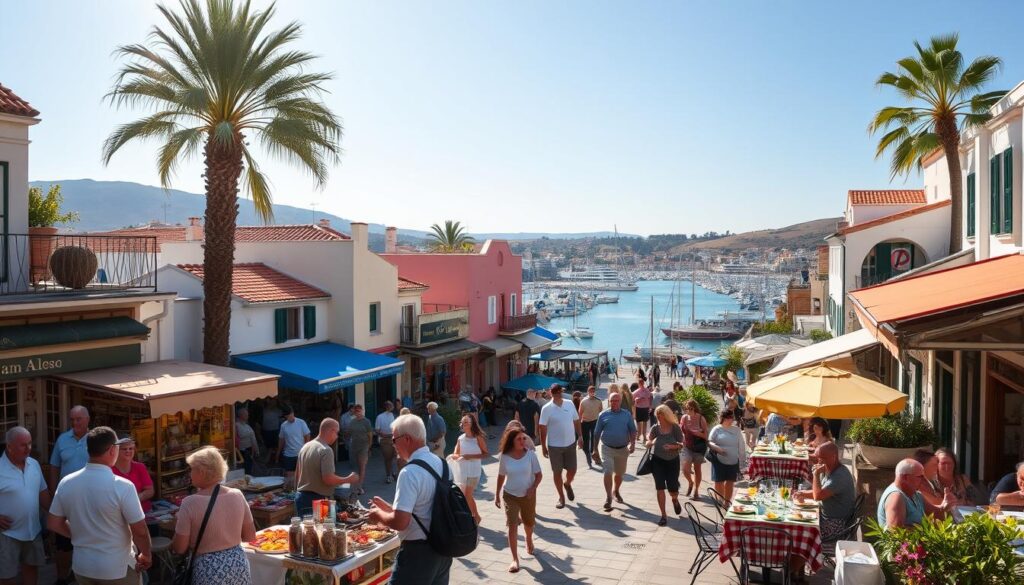
Volunteering and Hands-On Recovery Initiatives
Volunteering among areas stricken by disasters provides individuals with the rare chance to execute meaningful improvements in the region through direct involvement. Numerous travelers bring personal involvement to community recovery through this active participation approach which directly helps with restoration. Joining local recovery programs enables you to gather resources that create beneficial results.
Finding Legitimate Local Opportunities
It is vital to detect authentic volunteer opportunities. Your search for legitimate volunteer opportunities must begin by investigating organizations which include Responsible Travel and All Hands and Hearts. The organizations direct service programs incorporate structured programs which link travel with service activities. These organizations guarantee that your dedication fulfills genuine community requirements.
authorities and non-profits organizations function as essential sources to find valuable information. Due to their knowledge they can show you projects which need urgent support including home reconstruction and school restoration. You should always check the authenticity of volunteer programs to guarantee your efforts create actual community outcomes.
The act of volunteering involves more than donating your time because it establishes enduring alterations that benefit people under your service.
| SLFT Component | Impact |
|---|---|
| Community Assets | Empowers residents to lead recovery efforts. |
| Resource Integration | Ensures sustainable use of local resources. |
| Tour Development | Boosts economy and preserves cultural heritage. |
Combining Tourism with Volunteer Efforts
Tourism and volunteer activity are compatible so travel enthusiasts can explore places as they make positive changes through their work. The residents of Puerto Rico who rebuilt houses received firsthand exposure to their island’s cultural heritage after Hurricane Maria. The implementation of this two-part strategy provides advantages to visiting tourists and residents alike.
The educational aspects of structured volunteer programs provide deeper community insight to volunteers working in those communities. Through such activities the travel experience becomes more fulfilling as you build enduring relationships.
Success Metrics and Campaigns
Available recovery initiatives have displayed quantifiable results throughout their operations. Through its reconstruction work All Hands and Hearts has accomplished the rebuilding of above 100 educational facilities in disaster zones. These volunteers programs prove that community service speeds up restoration work and generates positive public attitude.
During your trip preparation select volunteer programs that maintain specific goals together with measurable targets. Your involvement in these campaigns becomes more effective because it strengthens a broader initiative.
Travel plans that match certain strategic opportunities enable transformative changes to emerge from your journey. The process of volunteering provides both medical advantages and cultural value to your vacation.
Engaging Local Culture and Community for Sustainable Recovery
The recovery process in disaster-zones depends on travelers respecting local cultural customs and practices. Travelers who interact with traditions while supporting community projects help establish long-term recovery for the community. Tourism under this method brings advantages to local communities and visitors while developing strong mutual relationships.
Respecting Traditions and Cultural Sensitivities
It demands consciousness along with sensitiveness to interact with the local culture. As part of their preparations visitors need to take the time to learn how local populations practice their traditions together with their customs and their cultural values. Tourists visiting post-tsunami Aceh received instructions about wearing proper modest clothing followed by expectations to join local rites. Respect between visitors and residents results in trust formation and strengthens their relationships.
Getting expert guidance from people in the local area forms another approach. Guests can gain valuable knowledge about cultural practices by seeking expert advice which will help them prevent accidental cultural blunders. Tourism results in unity between cultures because the activities naturally follow local sensitivities.
Supporting Community-Led Projects
The sustainable recovery needs community-driven projects as its foundation. The initiatives enable residents to lead their journey toward a better future by safeguarding their ancestral heritage. Traditional artisans from Aceh revived their local crafts to attract visitors which strengthened their economic development.
The response of tourists involves supporting local sustainable efforts through buying handmade items while they join cultural classes. These financial contributions serve two important purposes as they maintain important heritage knowledge and cultural experiences for future time periods.
The meaningful and sustainable recovery of a community results from its leadership.
The impact of travelers becomes positive when they show respect to traditional practices and support community-sourced initiatives. As a result this method makes tourism an instrument that fosters social healing while driving growth for both visitors and community members.
Boosting Local Economies Through Tourism
Disasters across the world have encountered rapid economic growth from tourism activities. The local economy struggles to recuperate from disasters because the damage inflicted to both businesses and their residents is significant. Tourism strategies that are strategically developed bring essential revenue and set off a growth progression for businesses.
Strategies for Economic Recovery and Growth
A reliable method for economic revival consists of integrating tourism approaches throughout national economic development efforts. The Indonesian government started domestic and international visitor attractions through marketing campaigns after the 2004 tsunami in Aceh. Local businesses together with infrastructure directly benefited from the rising visitor numbers within several years.
One important aspect of tourism occurs when it generates multiple rounds of economic activity. Moneys spent by tourists in a destination enable the economy to move money locally to benefit hotels and local restaurants and small businesses. The recovery process enhances both resident job availability and healing prospects.
The tourism model creates value by restoring both people and community enterprises.
The development of better infrastructure stands as an essential end result. The creation of tourism development generates better infrastructure such as transportation systems and roads and public facilities. Such upgrades construct better conditions for both visitors and residents leading to an enhanced area resilience.
Tourism operations produce financial growth that helps declining economies to bounce back.
More employment opportunities become available for residents as visitors spend more money.
Developing the infrastructure is supported by funds that come from tourism activities.
To rebuild trust in a destination
Despite these benefits, challenges remain. To rebuild trust in a destination and fix its damages one needs to implement dynamic solutions. The successful recovery model from Aceh provides example solutions which any region can duplicate to develop tourism for sustainable outcomes.
Tourism tourism leaders utilize the Sustainable Livelihoods Framework for Tourism (SLFT) as their methodology for development.
The Sustainable Livelihoods Framework for Tourism (SLFT) provides disaster recovery operations with an established method of recovery. Integration of tourism serves to enhance disaster recovery programs under sustainable expansion criteria. SLFT enables organizations to evaluate travel-related impacts that help rebuilding efforts through the use of community resources.
Insights from the Aceh Tsunami Tourism Case
A clear instance of how SLFT operates emerges through a study of the Aceh tsunami event. Tourism served as a vital recovery approach which the region adopted after facing the disaster. Local community members united to construct new roads and facilities and regenerate local tourist faith.
Local residents through interviewing demonstrated that SLFT facilitated the inclusion of their requirements within recovery programs. Community members implemented tours as a way to present Aceh’s cultural traditions when they became accessible again. Using this method simultaneously increased tourism industry strength and provided local inhabitants with restoration powers over their upcoming outcomes.
Integrating SLFT into Travel Planning
Travel planning achieves better support for local recovery through implementation of SLFT principles. The first step requires researchers to use proper resource data for understanding the requirements of their target community. A visit that supports sustainable goals creates positive contributions to the destination.
After the Aceh tsunami visitors received recommendations to participate in cultural workshops as well as to support local businesses. Thousands benefited from both financial backing and created enduring connections that joined visitors to local residents through this approach.
The strategy of SLFT enables tourism to serve as a sustainable instrument for recovery that helps local communities and their travelers.
Conclusion
After disasters occur society discovers untapped chances for expansion and revival. Local communities can insert tourism strategies into recovery programs through the utilization of the Sustainable Livelihoods Framework for Tourism (SLFT). Through this method both enduring advantages and urgent necessities find solution.
Strategic tourism has proven through the Aceh tsunami case study that it helps rebuild economies together with restoring social confidence. The success of marketing efforts combined with correct educational materials functions as tools for changing public understanding and drawing tourist support.
Traveling responsibly alongside thoughtfully crafted travel schedules results in highest possible positive outcomes. Local stakeholders alongside governments need to join forces to develop sustainable strategies which will benefit the community of visitors and residents. The implementation of such principles helps us transform obstacles into prospects that build lasting development.


